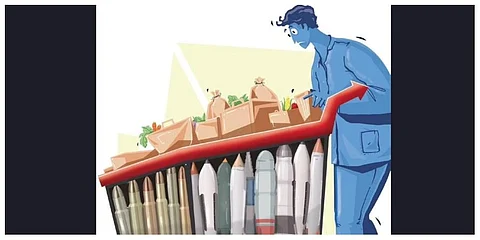Need to get inflation target rates right
The RBI’s inflation mandate was deemed a gentlemen’s agreement and never meant to be broken. Though the Monetary Policy Committee (MPC) has the luxury of blaming the 6% breach on supply-side faults like high oil prices, there’s an emerging view that the central bank’s pursuit of price stability needs a revisit. The government and RBI agreed to a status quo during last year’s review following the completion of MPC’s first five-year tenure. But inflation in the post-pandemic era seems tethered to temporary but repeated supply shocks, causing severe food and energy crises seen in recent history.
As Deputy Governor Michael Patra has indicated in his speeches, MPC meetings and independent articles, India’s inflation target needs an update. He believes estimates of threshold inflation, beyond which inflation retards growth, worked out to 6% in the pre-pandemic period but now need re-estimation. Others agree that both the 4% target and the tolerance band of 2% on either may be widened to accommodate measurement issues, forecast errors and supply shocks and, lastly, failure to be defined to four as against three consecutive quarters of deviation for monetary policy to remain credible.
Even if the remit remains unchanged until its following review in 2026, the central bank must urgently make efforts to reduce forecast errors. For instance, since 2016 when the inflation target regime began, RBI’s inflation readings saw both overestimation and underestimation, while GDP growth projections saw persistent overestimation. Accuracy in economic forecasts is central to any inflation-targeting regime, as monetary policy decisions are based entirely on internal projections. Another aspect that has vexed public opinion relates to the adverse impact of supply shocks, even though it lies outside the realm of monetary policy. In India, the prominence of food and fuel in the consumption basket amplifies the dominance of supply-side shocks, and perhaps it’s only reasonable to hold the government accountable for food and fuel price fluctuations.
Though executed by RBI, monetary policy is essentially a contract between the sovereign—via the central bank—and the people. As Patra noted, it’s an assurance by the sovereign to citizens about the money they can trust, that doesn’t lose purchasing power and stores future value. Put another way, price stability is a shared responsibility between the government and the central bank, and the sovereign is equally answerable.

